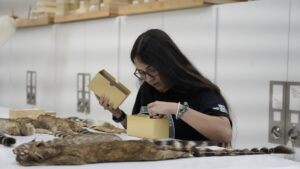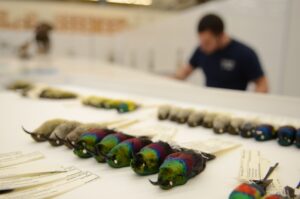Formerly the Texas Cooperative Wildlife Collection, the Biodiversity Research and Teaching Collections were established in 1936 by W.P Taylor and Dr. William B. Davis, founder of the Department of Wildlife Management (later Ecology and Conservation Biology) at Texas A&M University. We maintain one of the largest University based natural history collections in the United States with over 2.3 million preserved specimens.

Represented are specimens of birds, mammals, reptiles, amphibians, fishes, and marine invertebrates. The collections serve as historical evidence of the distribution of wildlife in Texas and beyond while providing valuable ecological and life history information for an array of species. The collections are used in the research of Texas A&M faculty, graduate students, and scientists worldwide, as well as for the teaching of natural history, conservation and wildlife management, both within the university and in public schools.

The collections at the Biodiversity Research and Teaching Collections primarily document the faunal history of Texas, the United States, Central and South America, and the Gulf of Mexico. However, the collection contains specimens from around the world. The collection of specimens includes their associated historical documents, field notes, and original collector catalogs. Historically the collections have been an invaluable source of data for researchers in the fields of biodiversity, vertebrate evolution, endangered species, wildlife and fisheries conservation, and even forensic biology. This information is made available to the public, to increase awareness of the natural history of Texas and thus enabling the citizens of Texas to make better-informed decisions affecting their natural environment.

The collections continue to grow because of the work of faculty, curators, affiliated researchers, and students. Expeditions, field work associated with graduate student projects, and regional projects are several of the ways we add specimens to our collection. All specimens are professionally curated by our staff curators and data are available electronically for interested researchers. Donations of legally collected specimens are welcome as well.
Currently, the Biodiversity Research and Teaching Collections is involved in a variety of projects including surveys for rare species across the southwest, avian malaria investigations both internationally and in the USA, host-parasite interactions, and private land surveys.

